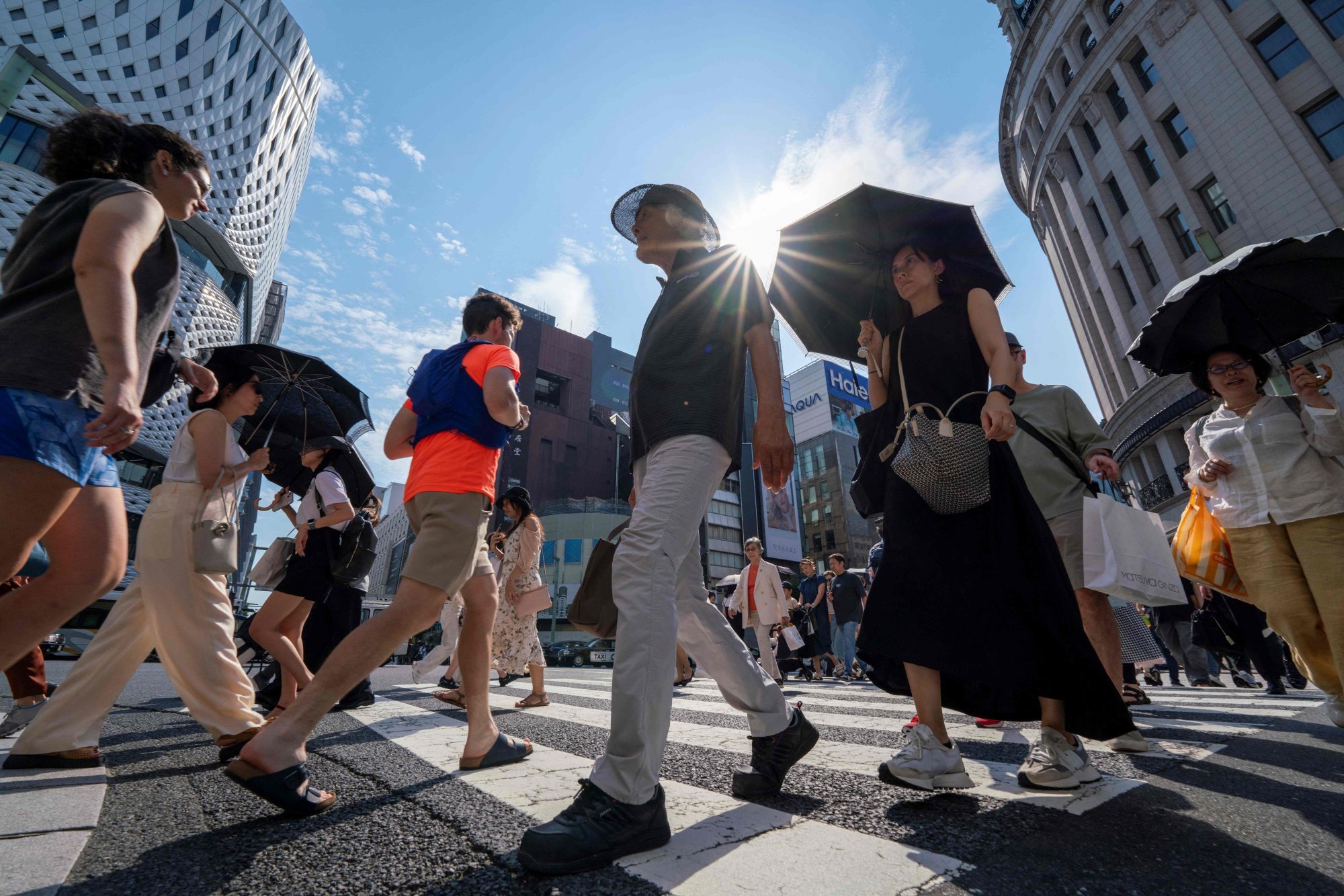Six people have died of heatstroke in Tokyo as Japan swelters under a rare rainy season heatwave, prompting authorities to issue a flurry of health warnings, and to set up new “cooling shelters” around the capital.
Authorities urged people to avoid physical activity as the environment ministry issued top “danger”-level alerts, while media said scores of people were hospitalised, with some dying from heatstroke symptoms over the last few days.
“It’s a life-threatening emergency,” said 60-year-old Hisako Ichiuji, who resorted on Tuesday to a “cooling shelter” at the capital’s Tokyo Tower, a popular tourist spot.
Over the weekend, the central Shizuoka region became the first in Japan to see the mercury reach 40 degrees Celsius (104 Fahrenheit) this year, far surpassing the 35-degree threshold classified by weather officials as “extremely hot”.
Typically, facilities such as community centres or libraries equipped with air conditioners, the shelters are part of a scheme adopted this year requiring local governments to provide people a respite from the heat after warnings go out.
“[In the past] the temperature wasn’t like this,” Ichiuji added. “I think it’s important to keep ourselves hydrated, and take shelter in a facility like this.”
Such severe heat in the middle of Japan’s rainy season is “rather rare”, caused in part by a strong South Pacific high-pressure system, a weather agency official said.

Temperatures also hit record highs near 40 degrees on Monday at observation posts in Tokyo and in the southern Wakayama region, according to local media.
The past few days have seen authorities issue heatstroke alerts in much of the country, urging residents to avoid exercising outside and to use air conditioning.
The capital logged three deaths linked to heatstroke on Saturday and three more on Monday, when the mercury hovered around 35 degrees at midday, according to the city’s medical examination office.
“Without the AC on, I find it difficult to survive,” Tokyo resident Sumiko Yamamoto, 75, said, adding she feels “it’s gotten drastically hotter” since last year.
“Through the advice given on TV, I try to stay hydrated as much as possible. Because I’m old, I’m being careful not to collapse,” she said.
Heatstroke is particularly deadly in Japan, which has the second-oldest population in the world after Monaco.
Yamamoto’s age puts her in the demographic flagged by health experts as particularly vulnerable to heatstroke, along with infants and those living alone or who are too poor to afford air conditioning.
The Japanese Association for Acute Medicine on Monday warned of the rising death toll from heat exhaustion nationwide, which grew from just a few hundred per year two decades ago to around 1,500 in 2022.
The sheer number of fatalities suggests that heatstroke now poses a danger on par with that of “a major natural disaster”, the group said, warning against non-essential outings.

With ever-hotter summers becoming the norm around the world, tourists like Ainhoa Sanchez, 29, aren’t too surprised by Tokyo’s temperatures.
“So the plan is going sightseeing a little bit. Drinking a lot of liquids. Maybe when we get too hot, we can get into a shop, look around, chill a bit and then go back to the street,” she said.
As demand soared, Japan’s biggest power provider, JERA, increased output at some plants and pulled back online some it had halted for maintenance, to help those struggling to beat the heat.
TEPCO, the main electricity provider to Tokyo, had to buy power from another utility to prepare for an expected surge in demand.
On Tuesday, Trade Minister Ken Saito said the government was monitoring the situation “with a sense of urgency” and would take every step to ensure stable electricity supply.
The farming and fishing industries are preparing for the impact of rising temperatures, which the agriculture ministry said this month were affecting the quality of staples such as rice and thinning the catch of some fish, such as salmon. (


